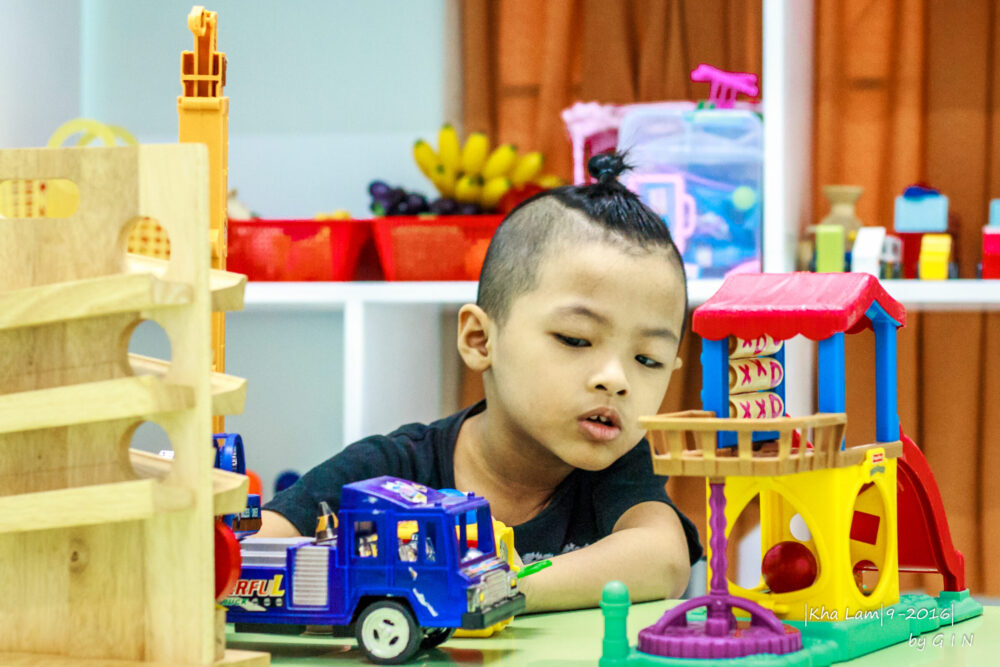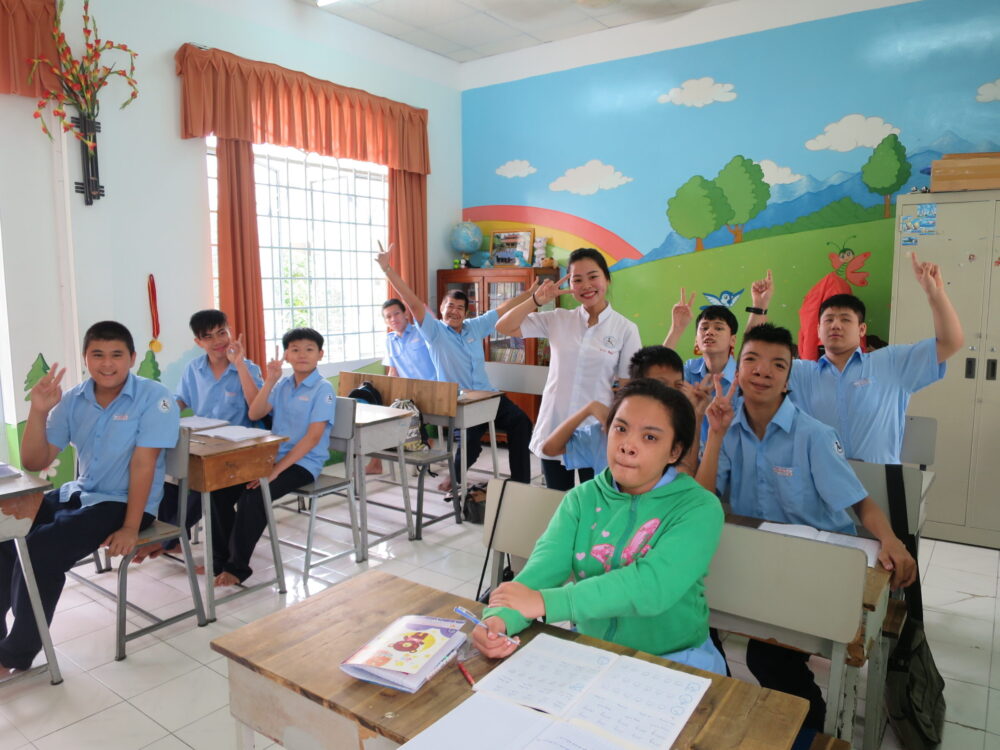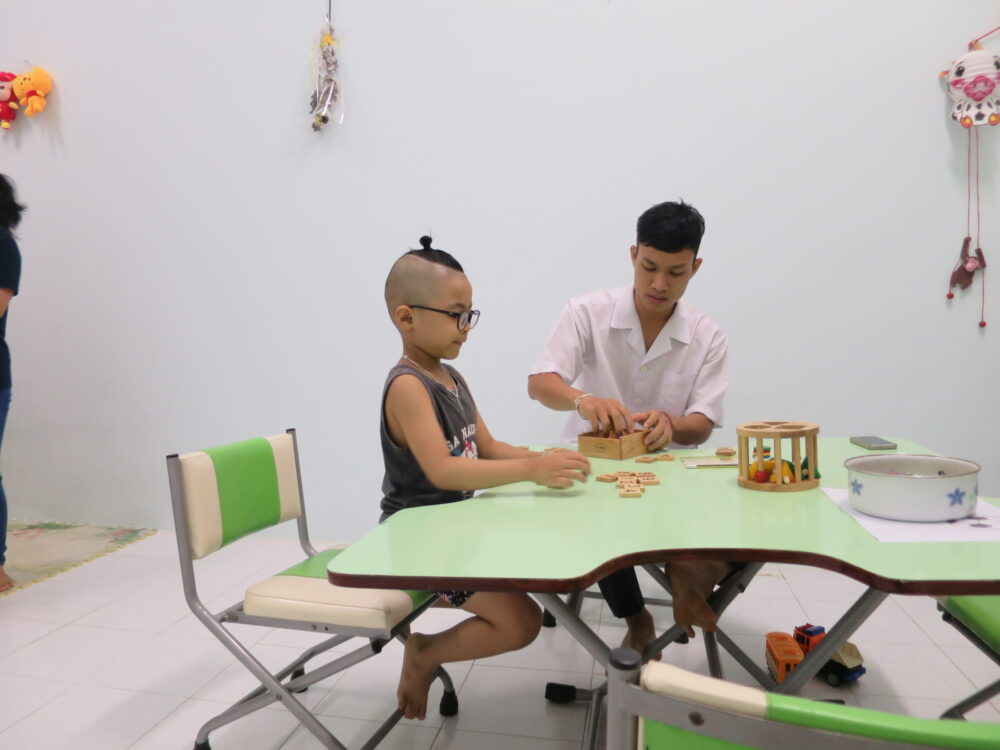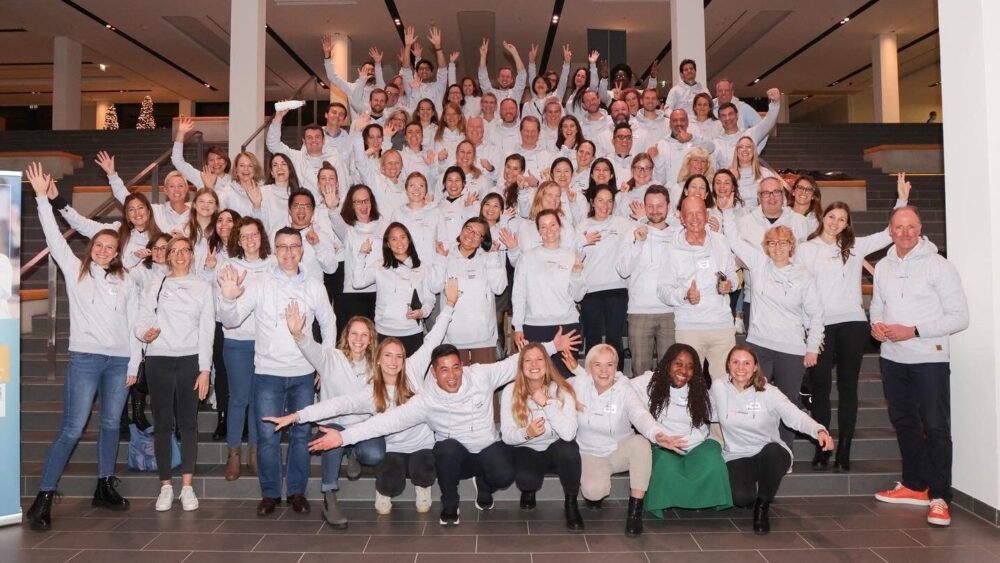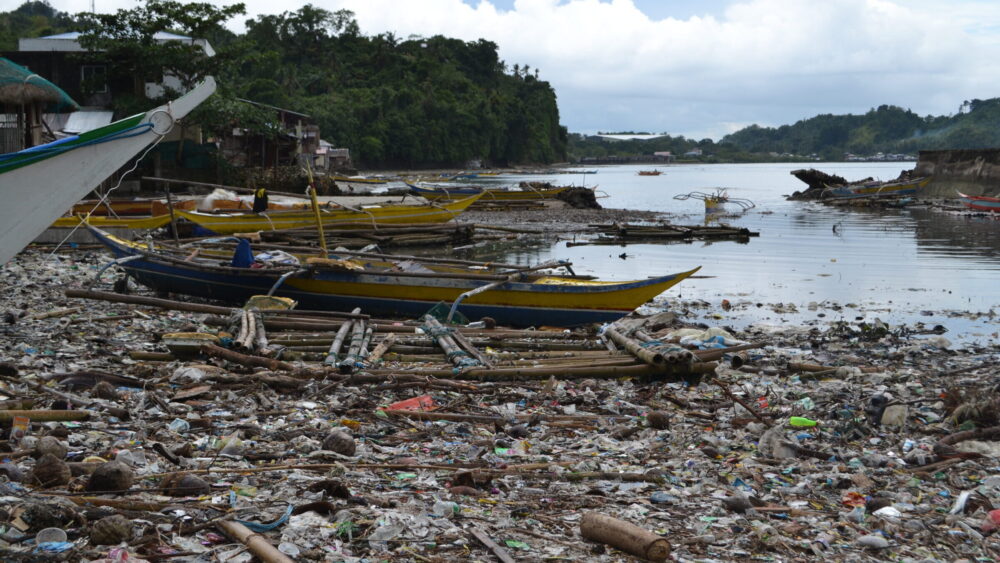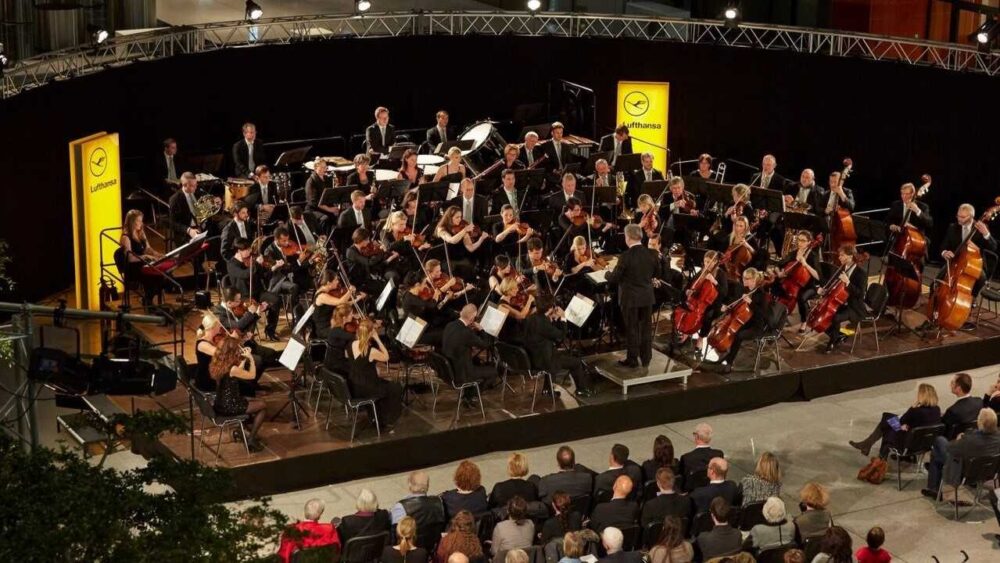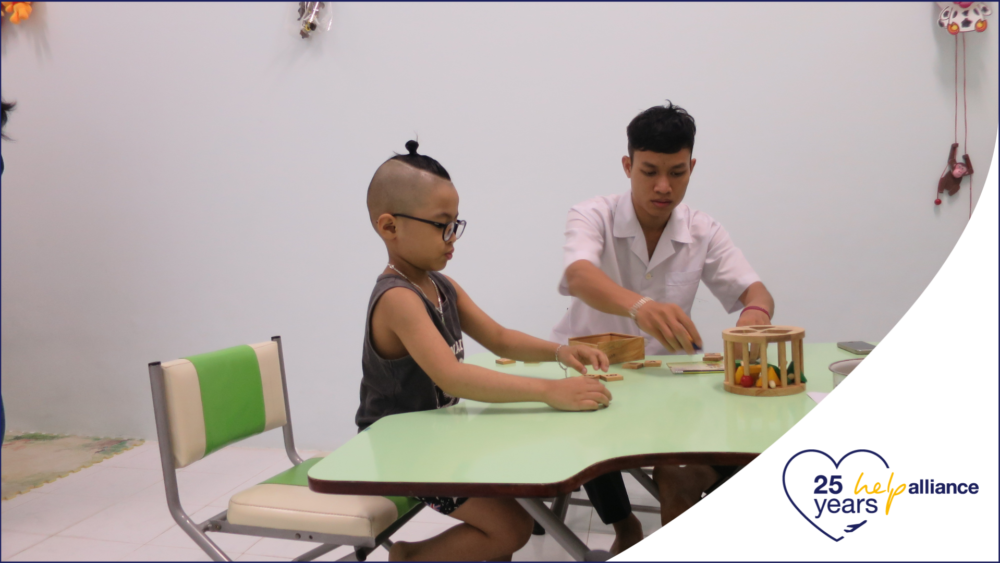
A teacher for Lam
When Thanh Tong first met little Lam, the 3-year-old couldn’t make any noises, nor could he understand when someone spoke to him. He didn’t react to the sound of his name, and it was very difficult for him to make eye contact. Due to his disability, Lam is a special case in Vietnamese society. The usual treatment of this group of people, which, depending on the source and definition of the disability, affects between ten to 20 million people in the Southeast Asian country, has long been to provide dignified care and support. For the social workers, the fact that it was possible to improve the situation of the children through targeted, coordinated measures was almost beyond imaginable.
But not for Thanh Tong. The 26-year-old has been working at the “Center for Rehabilitation and Education for Disabled Children” in Khanh Hoa, about ten hours by car from Ho Chi Minh City, since 2013. That’s where he met Lam two years ago. “In the beginning, it was hard for both of us. Despite my university degree and three years of professional experience, I lacked the right training to properly look after him,” he explains.
In 2016, Thanh Tong took part in a continuing education course on the early detection of autism in children in Khanh Hoa. The program is part of the cooperation between help alliance and Saigon Children’s Charity, which aims to educate teachers and improve the lives of children with disabilities in Vietnam. “During the training period, I learned many intervention techniques for children with disabilities and realized how important it is to work closely with parents,” he explains. The teacher was able to put what he had learnt
into practice and continue working with Lam and his mother.
“Providing teachers who work with people with disabilities with intensive training is essential. My experiences have shown that there is a great need here,” says Dominik Kopp, Lufthansa A340 pilot and help alliance project manager, explaining the program’s approach.
“At the beginning of the project, I spoke to the head of a school for autistic children. He told me about a child who rolled from the gates of the school into the school building every day without anyone being allowed to touch him; another child bit the teachers. But they didn’t understand why the children exhibited such behaviors and they didn’t know how to deal with them.” For many years, he has been volunteering for help alliance in Vietnam and has recognized that especially children with disabilities need a
strong voice. “Almost every fifth child in our kindergartens had a disability. Unfortunately, the reality is that these children were often socially and privately isolated and led miserable lives.” In addition to providing continuing education, the program has improved standardized procedures for early detection and developed curricula and therapy plans for the disabled. “If you recognize a hearing impairment very early and treat it properly, that child will grow up perfectly normal – the longer you ignore it, the more dramatic the circumstances become,” says Dominik Kopp.
In 2016, Kopp and his local partners in Ho Chi Minh City tested the needs of children with special needs in twelve schools. The results showed that teachers encountered many difficulties when applying the old curriculum. “That’s why we helped Ho Chi
Minh City‘s Department of Education and Training drive our curriculum forward. Before 2016, only 4.2 percent of schools for special needs used this new curriculum; by 2018, that figure had risen to 91.2 percent.” Two years have passed since Thanh Tong and
Lam first looked each other in the eye. Lam can now communicate, and he‘s a bright kid. “It makes me so happy to see how he’s developed. Lam sometimes even drives his mother crazy with his many questions,” he says with a smile.
“These are exactly the experiences that make me love my work and the children. I hope to expand my knowledge even further so that I can help as many children with disabilities as possible.”
Lam’s story was first published in the 2018 Annual Report.

